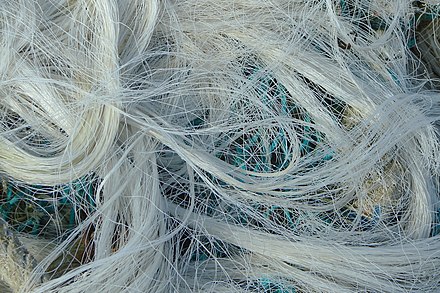Monofilament fishing line, often simply referred to as “mono,” is a single-strand fishing line made from various polymers, with nylon being the most common. This versatile and widely used line has been a staple in the angling community for decades due to its affordability, ease of use, and a range of beneficial properties that suit various fishing styles and environments.
Composition and Construction
Monofilament line is produced by melting and extruding a mixture of polymers through tiny holes, forming a single continuous strand. This process results in a smooth, flexible line that can be produced in various diameters and strengths, allowing anglers to select the perfect line for their specific needs. The diameter of the line directly correlates to its strength, with thicker lines generally offering higher tensile strength.

Key Properties and Advantages
1. Flexibility and Stretch: Monofilament is known for its high degree of stretch, which can be both an advantage and a disadvantage depending on the fishing situation. The stretchiness provides a cushioning effect, which helps prevent the line from breaking under sudden, heavy loads. This property is particularly useful when fighting strong, fast fish that make sudden runs or jumps.
2. Knot Strength: Monofilament fishing line boasts excellent knot strength, making it easier for anglers to tie secure knots that are less likely to slip or break. Popular knots like the Palomar knot or the improved clinch knot work exceptionally well with mono lines.
3. Buoyancy: Mono lines tend to float or have neutral buoyancy, which is beneficial when using topwater lures or fishing in shallow waters. This property makes monofilament an ideal choice for techniques that require the line to stay near the surface.
4. Abrasion Resistance: While not as abrasion-resistant as some other types of fishing lines, such as braided or fluorocarbon lines, monofilament offers adequate resistance to abrasion, making it suitable for a variety of fishing environments, including those with rocks or vegetation.
5. Visibility and Color Options: Monofilament is available in a wide range of colors, allowing anglers to choose lines that either blend into the water or are highly visible above water, depending on their needs. Clear or blue lines are popular for their low visibility underwater, while high-visibility lines in colors like fluorescent yellow are useful for detecting bites and managing line control.
Applications and Considerations
Monofilament fishing line is suitable for a variety of fishing techniques and environments, from freshwater to saltwater fishing. Its versatility makes it a go-to choice for many anglers, whether they are targeting bass in a lake, trout in a stream, or redfish in coastal waters.
However, it is important to consider that monofilament lines tend to degrade over time due to exposure to UV light and water absorption, which can weaken the line. Anglers should regularly check their lines for signs of wear and replace them as needed to ensure optimal performance.
In summary, monofilament fishing line remains a fundamental tool in the angler’s arsenal, offering a balance of strength, flexibility, and ease of use. Its versatile nature makes it suitable for a wide range of fishing scenarios, ensuring that anglers of all skill levels can benefit from its reliable performance. Whether you’re a seasoned pro or a weekend warrior, having monofilament line in your tackle box is a smart choice for successful fishing adventures.
Image: Wikipedia





